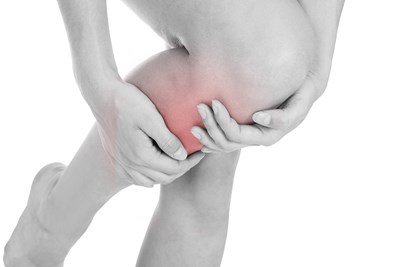Shin splints are fairly common among runners, dancers, and other athletes. However, that pain in your shins can be caused by a variety of much more serious things as well. Being informed can help prevent under-diagnosing yourself, which in turn prevents letting those more serious problems get worse. Additionally, the more you understand about the anatomical workings of shin splints, the better suited you are to treating them properly and preventing them in the first place.
Tibia
The tibia is the large, inner bone between the ankle and knee, of which the external shin is mostly comprised. Thus, when someone says they have “shin splints,” they are often referring to a pain that stems from this bone, which can be damaged by repetitive overuse, imperfectly formed foot bones, poor choice of shoes, and other things that wear on the tibia’s support.
Medial Soleus Fascia
Roughly translated, this is the fibrous tissue that surrounds the “sandal” muscle (medial soleus) in the middle of the calf. When this muscle is not as flexible, strong, or loosened up as it should be, it forces the tibia to accept an increase of weight and responsibility it is not designed for.
Sharpey’s Fibres
Every bone is surrounded by a layer of periosteum, which is itself made of several layers, and which helps heal broken bones. From the periosteum, the muscle and bone are connected by Sharpey’s Fibres, connective tissues that are themselves a part of the periosteum’s outer layer. When the connection is interfered with, the pain of shin splints is often the result. The muscle literally begins to tug and sever the bonds that keep it attached to the bone.
Medial Tibial Stress Syndrome (MTSS)
This is the most common cause of shin splints, especially in athletes who are new to their activity and push themselves too hard. Although the pain of shin splints may be caused by many things, MTSS is generally recognizable by the way the pain occurs over most of the lower shin, rather than being consigned to a localized spot.
Tibial Stress Fracture (TSF)
TSF is often mistaken for shin splints, but it is often easy to differentiate between the two. A stress fracture may occur from continued stress on the bone or when the bone itself is weaker than it should be. While shin splints are painful in a broad area, TSF can usually be pinpointed to a small area of more intense pain. Additionally, morning brings relief, because the bone has been able to rest and heal without being stressed further, while shin splints become worse with stillness. X-rays are not usually sufficient to see such a fracture, and diagnosis requires a bone scan.
Anterior Tibialis Tendinitis
This is another injury often mistaken for shin splints. The anterior tibialis, the tendon that lifts the foot, becomes irritated and swollen. Swelling of foot and ankle are key indicators that the pain is caused by tendinitis, not MTSS. The healing process is similar to that of MTSS, requiring lessened activity, specific exercises, and symptomatic treatment.
Compartment Syndrome
While the pain of shin splints may occur on the inside or outside of the shins, compartment syndrome is generally on the outside, or anterior. The pressure in one of the muscle and nerve compartments becomes greater than normal, making blood flow difficult. The muscle begins to swell, and the pressure must be released to allow healing. The pain is distinguishable by a strange feeling patients often refer to as burning.
Overpronation
While shin splints may be caused by exercise and other external factors, internal factors can also increase the risk of developing shin splints. Pronation is the movement of the heel and ankle as each step is taken, to allow the arch the most contact with surfaces for balance and sure-footing. Overpronation occurs when the arch is not at optimal height, causing the heel and ankle to roll more than fifteen degrees inward. The continual stress of such movement can harm the connective tissues of the leg, leading to shin splints.
Orthotics
Orthotics are the devices used to provide relief during times of leg injury and to help deter the ill-effects of issues like high arches. Items like neoprene sleeves can provide additional support for the knee, while insoles can provide additional support for arches.
Extracorporeal Shockwave Therapy
While most cases of shin splints can be eased by appropriate exercises, decreasing activity, orthotics, and anti-inflammatories, not all cases respond. Extracorporeal shockwave therapy is an innovative technology that provides a potential alternative to surgery when these measures are not enough or for more chronic cases. External shock waves of energy are directed at the area, which then stimulate healing noninvasively with minimal side effects.



